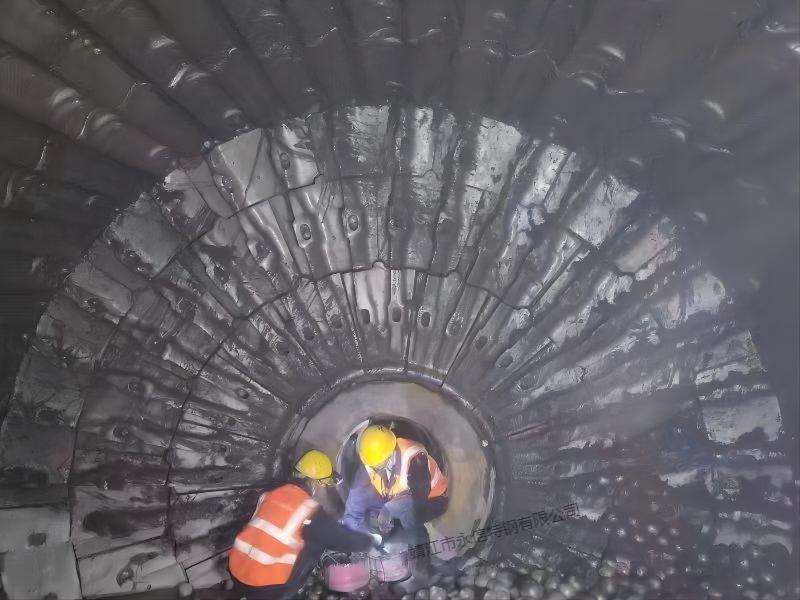Φ3.3m*6.6m Ball Mill Liners: Quality and Performance in Grinding Solutions
Ball mills are vital equipment in the mining, cement, and mineral processing industries. The efficiency and lifespan of a ball mill largely depend on the quality of its liners. This article explores the Φ3.3m*6.6m ball mill liners, highlighting their features, manufacturing process, benefits, and the significance of choosing high-quality liners for industrial applications.

Importance of Ball Mill Liners
Ball mill liners serve multiple purposes: they protect the mill shell from wear, enhance grinding efficiency, and improve the lifespan of the equipment. High-quality liners ensure smooth mill operation, reduce downtime, and lower maintenance costs. Selecting the right liners for the Φ3.3m*6.6m ball mill is essential for achieving optimal performance.
Features of Φ3.3m*6.6m Ball Mill Liners
1. Material Composition: The liners are made from high-manganese steel, chrome-molybdenum alloy, or rubber, depending on the application. High-manganese steel provides toughness and impact resistance, chrome-molybdenum alloy offers wear resistance and corrosion protection, and rubber liners provide noise reduction and durability.
2. Design and Structure: The design of the liners is critical for performance. The Φ3.3m*6.6m ball mill liners feature a wave or corrugated structure that lifts the charge higher, increasing impact energy and enhancing grinding efficiency. This design ensures effective particle size reduction and improved mill performance.
3. Customization: Liners can be customized to meet specific operational requirements, considering factors such as mill speed, ore characteristics, and grinding media size. Customization ensures better adaptation to varying grinding conditions, enhancing overall efficiency.
4. Durability: High-quality liners are designed to withstand harsh grinding conditions, ensuring a long service life. This durability reduces the frequency of replacements and minimizes operational disruptions.
The Manufacturing Process
1. Material Selection: High-grade raw materials are selected based on the required liner properties. The choice of material impacts the liner’s toughness, wear resistance, and overall performance.
2. Melting and Casting: The materials are melted in electric arc furnaces and poured into molds to create the specific shape and structure of the liners. This process ensures the liners have the necessary strength and resilience for industrial applications.
3. Heat Treatment: Liners undergo a heat treatment process to enhance their mechanical properties. This process involves heating the liners to a specific temperature and cooling them at a controlled rate, improving their hardness, toughness, and wear resistance.
4. Machining: The liners are machined to precise dimensions, ensuring they fit perfectly in the Φ3.3m*6.6m ball mill. Precision machining enhances the liners’ performance and the mill’s grinding efficiency.
5. Quality Control: Stringent quality control measures are implemented at every stage of manufacturing. Chemical analysis, casting inspection, and testing of finished liners for hardness and wear resistance ensure the highest quality standards.
Benefits of High-Quality Liners
1. Enhanced Grinding Efficiency: High-quality liners optimize the motion of the grinding media, leading to more effective particle size reduction and increased mill throughput.
2. Reduced Maintenance Costs: Durable liners reduce the need for frequent replacements and repairs, lowering maintenance costs and minimizing downtime.
3. Improved Safety: Properly designed and installed liners protect the mill shell from damage, reducing the risk of structural failures and enhancing operational safety.
4. Noise Reduction: Rubber liners offer significant noise reduction benefits, creating a safer and more comfortable working environment.
Applications of Φ3.3m*6.6m Ball Mill Liners
1. Mining Industry: In mining, ball mills grind ores to extract valuable minerals. The Φ3.3m*6.6m ball mill liners are designed to handle abrasive ores, ensuring efficient grinding and extended equipment life.
2. Cement Industry: Ball mills grind clinker and other raw materials in the cement industry. The robust design of the Φ3.3m*6.6m ball mill liners withstands high temperatures and harsh conditions, enhancing cement grinding efficiency.
3. Power Plants: In power plants, ball mills pulverize coal for combustion. High-quality liners ensure efficient coal grinding and protect the mill from wear.
4. Chemical Industry: Ball mills in the chemical industry grind various materials for chemical reactions. The durability and customization options of the Φ3.3m*6.6m ball mill liners make them suitable for a wide range of chemical grinding applications.
Choosing the Right Liners
1. Material Properties: The choice of liner material depends on the type of material being ground and the specific grinding conditions. High-manganese steel is ideal for impact resistance, while chrome-molybdenum alloy offers better wear resistance.
2. Mill Operating Conditions: Factors such as mill speed, feed size, and grinding media type influence the design and material selection for the liners. Customization ensures optimal performance under varying conditions.
3. Cost-Effectiveness: High-quality liners may have a higher initial cost, but their long-term benefits in terms of durability and reduced maintenance costs make them a cost-effective choice.
4. Manufacturer Reputation: Choosing liners from reputable manufacturers ensures they meet quality standards and provide reliable performance. Reputable manufacturers also offer technical support and customization options.
Conclusion
The Φ3.3m*6.6m ball mill liners are crucial for efficient and reliable grinding operations in various industries. High-quality liners protect the mill shell, enhance grinding efficiency, and extend equipment lifespan. By investing in durable, well-designed liners, operators can achieve improved efficiency, reduced maintenance costs, and enhanced safety, contributing to the success of their operations.


